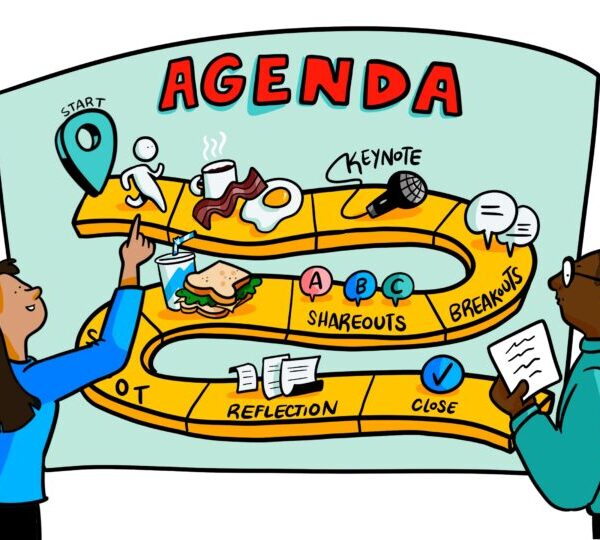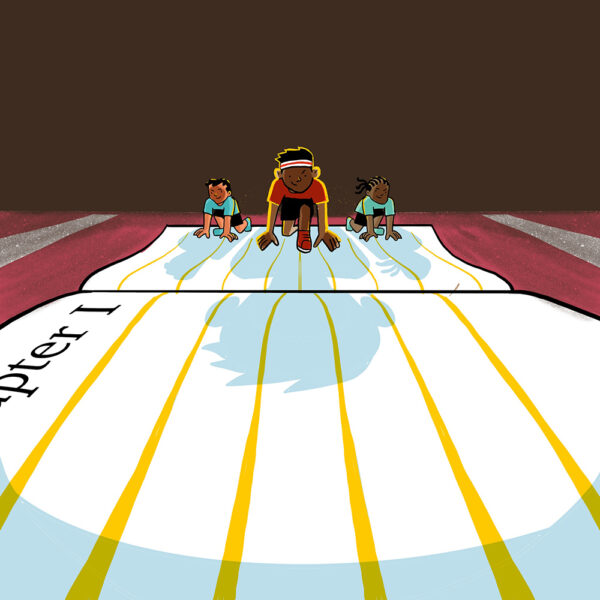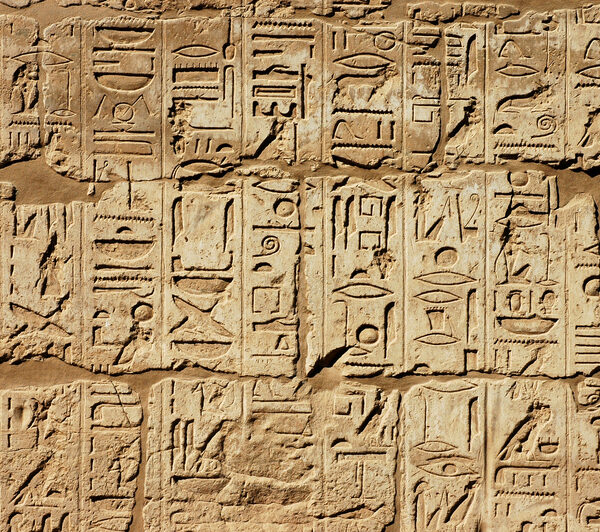Sometimes, it can be difficult for new clients to understand why graphic recording and graphic facilitation is so effective. This article is part of an ongoing series, It’s a Visual World. In it, we explore everyday experiences that showcase the myriad ways our brains work more efficiently with visual input. Look for areas in your daily life for the visual iconography you rely on, then give us a call. Seeing is believing.
Your walls can talk. Here’s what they say about you
Do you have any movie posters on your wall? Maybe a concert or comedy show one-sheet? Did you, or do your kids, have one on the wall of their dorm?
If you do, let me be presumptuous enough to tell you why you like.
It’s not because you like the art. Maybe you do, but that’s a bonus.
It’s not even because you like the film, or the music. You probably do, but that’s why you buy the DVD or the record.
It’s a social signal to those closest to you, and a reminder to yourself, about who you are.
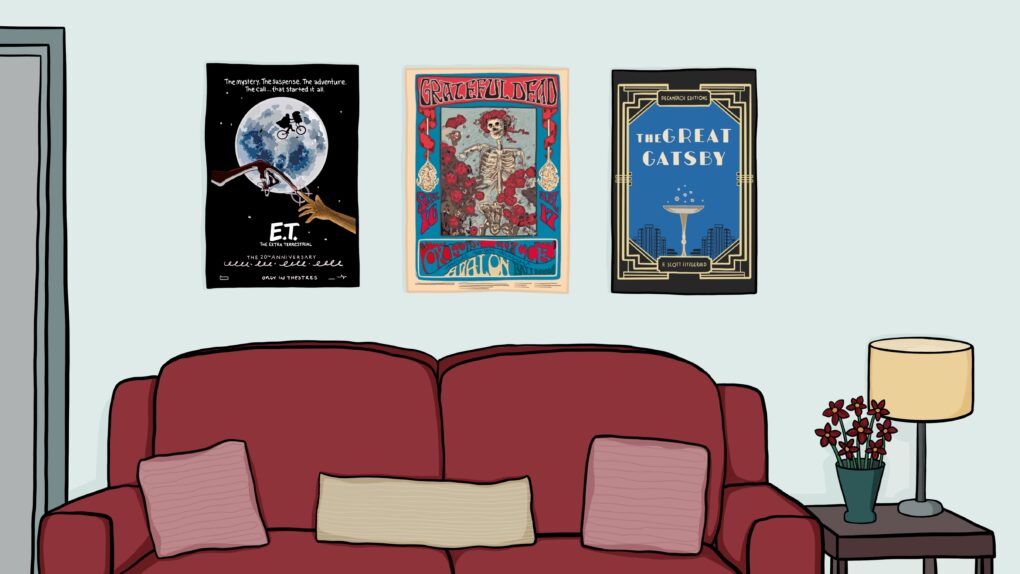
What’s in a poster?
A cornerstone of modern advertising, the lithographic poster wasn’t even technologically possible before the 1880s, with the advent of the 3 stone press. Within 10 years, it was the dominant artform of the The Belle Epoque and Art Nouveau in Paris.
Over the next 50 years, poster popularity ebbed and flowed, and saw its greatest heights achieved in service of propaganda efforts supporting one side or the other of the Boleshevik revolution and two world wars.
With the arrival of the 1950s and mass consumerism, posters returned to their Art Deco roots, as powerful merchants of advertorial marketing. In the 50 years sense, fashion, trends, and technology have changed dramatically, but the poster relies on the same tools it always has: pictures and words.
And those tools combine to powerful effect. The correct choices of typography, color, and bold imagery conspire to draw in not just the human eye, but the human brain. A good poster demands that we stop, evaluate, and ask ourselves a question that only it can answer.
And posters we love tell a story we’re familiar with, about a brand, piece of art, or person we love. The remind us of our affiliations, interests, and identities. They speak to our egos by way of capturing the attention of our id.
Your poster is shorthand – a visual metaphor – signaling which tribe you’re a part of. Averring the sort of things “people like you” dedicate and devote their extremely valuable and preciously rare time and attention to.
What would a poster of your mission look like?
Graphic recording and graphic facilitation offers the same thing. You’ll probably like the boards we create – in fact, we’ll go through several iterations to make sure you love it.
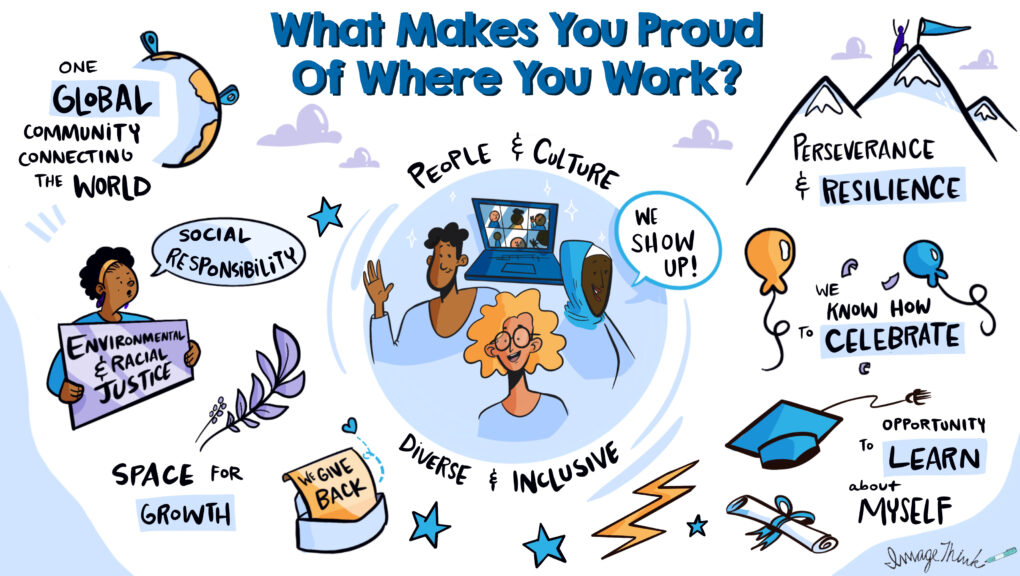
The real value isn’t in the aesthetic. Nor will it even be in looking back at the work we co-create again and again.
The real value, the reason some of our clients hang our work on their office walls or in the communal office spaces, is in the signal it sends.
The work is an instant, constant, and powerful reminder of the work that your team did together. Of the alignment your team reached through collaboration. Of the dedication to the goals and values you set.
That tie-dye poster with the Grateful Dead skull is cool looking. That E.T. The Extra Terrestrial one sheet is one for the ages in terms of iconography. But I’m more interested in what they tell me about who you are.
What do you want to hang in your office?
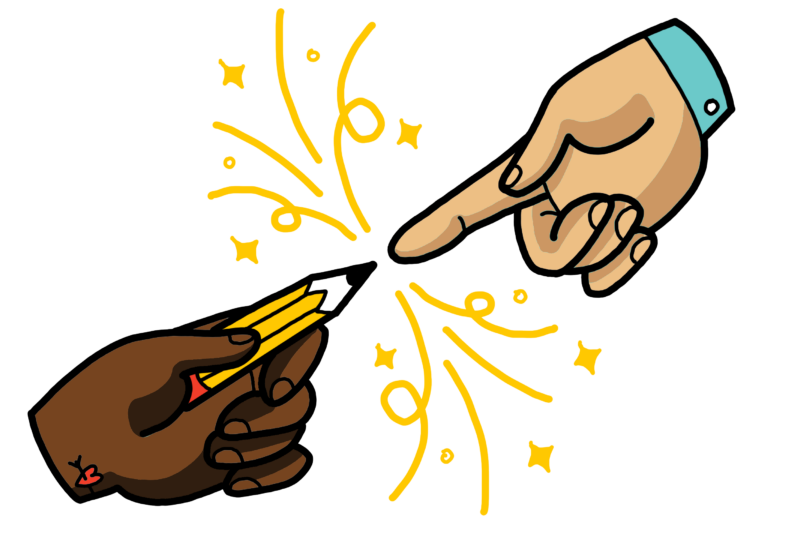
Send a signal
Work closely with a visual strategist to create an eye-catching organizational, team, or mission and value-focused poster.
